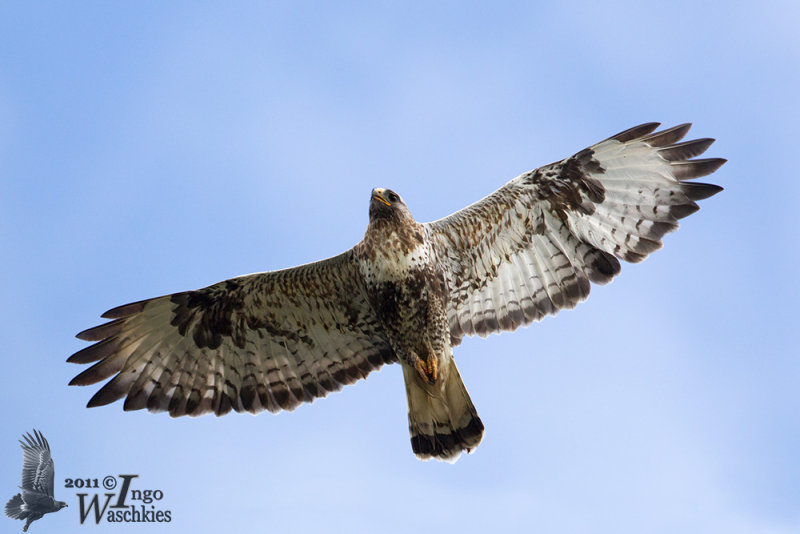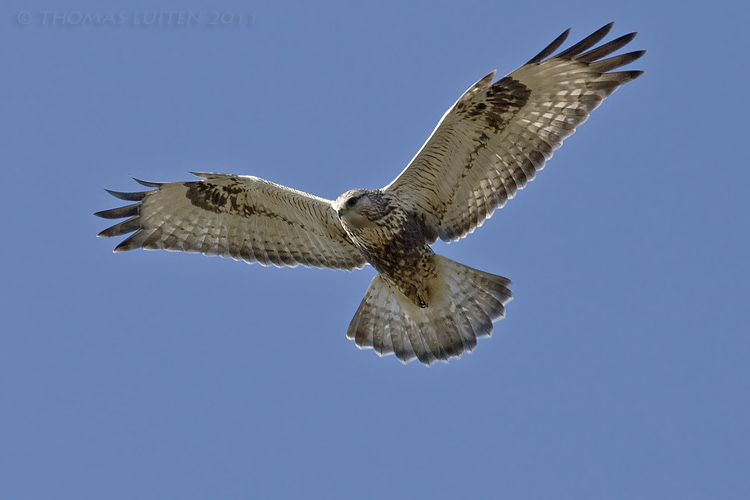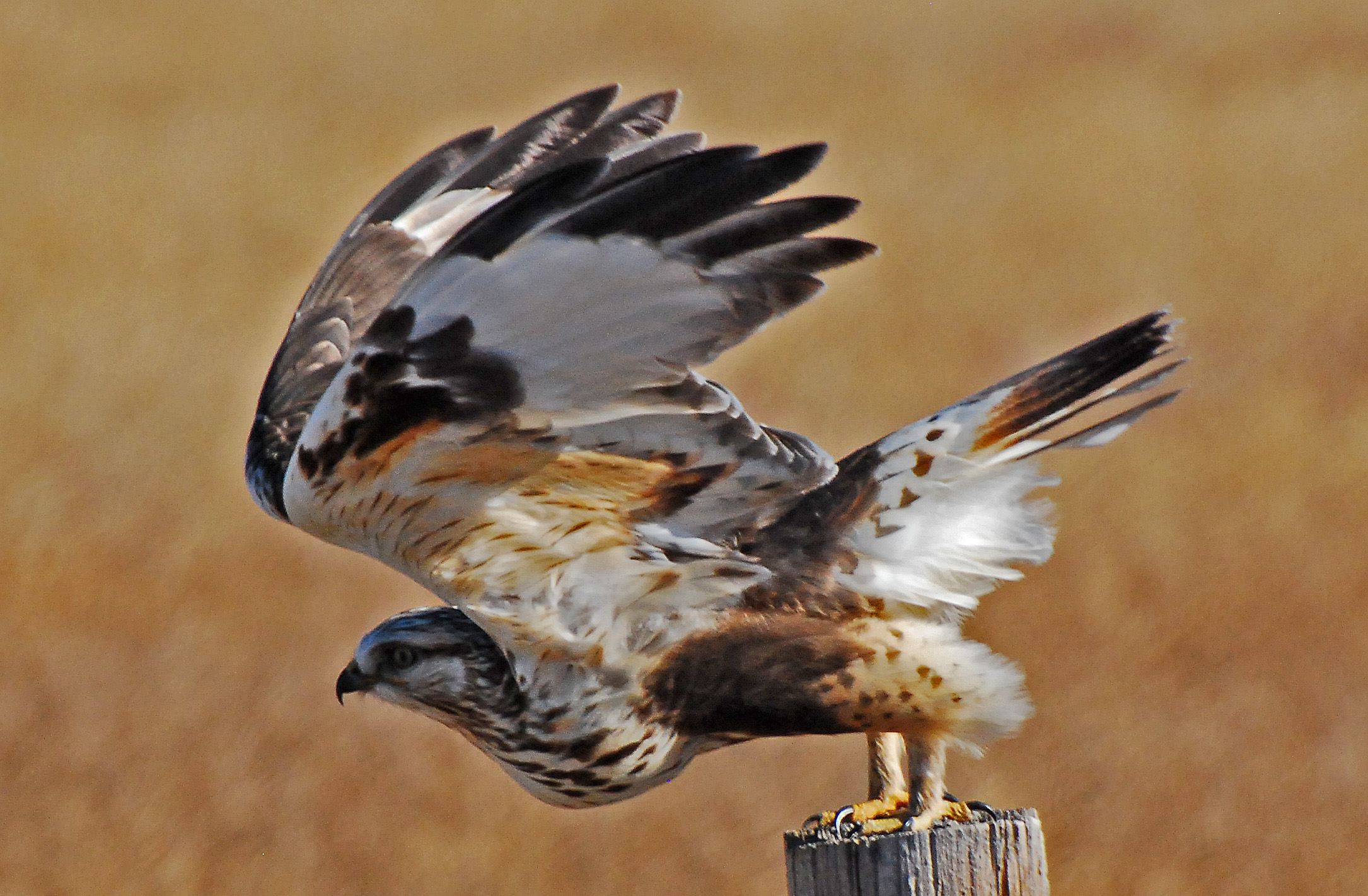
Buteo lagopus
SUBFAMILY
Accipitrinae
TAXONOMY
Falco lagopus Pontoppidan, 1763, Denmark. Four subspecies.
OTHER COMMON NAMES
English: Rough-legged hawk; French: Buse pattue; German:
RauhfulЯbussard; Spanish: Busardo Calzado.
PHYSICAL CHARACTERISTICS
19.7–23.6 in (50–60 cm); male 21.2–48.7 oz (600–1380 g); female
27.5–58.6 oz (780–1660 g). Brown and white mottled
plumage varies in intensity among subspecies. White tail with
dark subterminal band.
DISTRIBUTION
B.l. lagopus: northern Eurasia from Scandinavia to River
Yenisey, wintering south to central Europe and central Asia.
B.l. menzbieri: northeastern Asia, wintering south to central
Asia, northern China, and Japan. B.l. kamtschatkensis: Kamchatka,
wintering south to central Asia. B.l. sanctijohannis:
Alaska and northern Canada, wintering south to central and
southern United States.
HABITAT
Mainly treeless tundra, but also wooded tundra and extreme
northern taiga when lemmings and voles are abundant. Usually
flat low country. Wintering grounds are also mainly flat, open
country, including prairie, cropland, and marsh.
BEHAVIOR
Clear migrant with separate breeding and wintering grounds.
Depart breeding grounds about September–October and return
about April–May. Timing and extent of migration depends on
seasonal prey abundance at either end.
FEEDING ECOLOGY AND DIET
Mainly preys on mammals, especially voles and lemmings. Also
takes birds, other vertebrate including fish, insects and carrion,
particularly when main prey scarce. Hunts by day, but occasionally
crepuscular.
REPRODUCTIVE BIOLOGY
Breeds as solitary pair, laying in May–June. Monogamous.
Usually nests on a protected ledge, high on a riverbank, cliff or
rocky outcrop, rarely in tree. Builds a bulky nest of sticks lined
with grass and prey remains; three to five eggs; greater number
(up to seven) in good seasons when food abundant. Incubation
about 30 days; fledging about five or six weeks.
CONSERVATION STATUS
Not threatened. No obvious threats in breeding grounds but
winter quarters are subject to habitat disturbance and other human
pressures.
SIGNIFICANCE TO HUMANS
None known.
Other popular Animals
Photo Gallery of - Rough-legged buzzard




 Animalia Life
Animalia Life